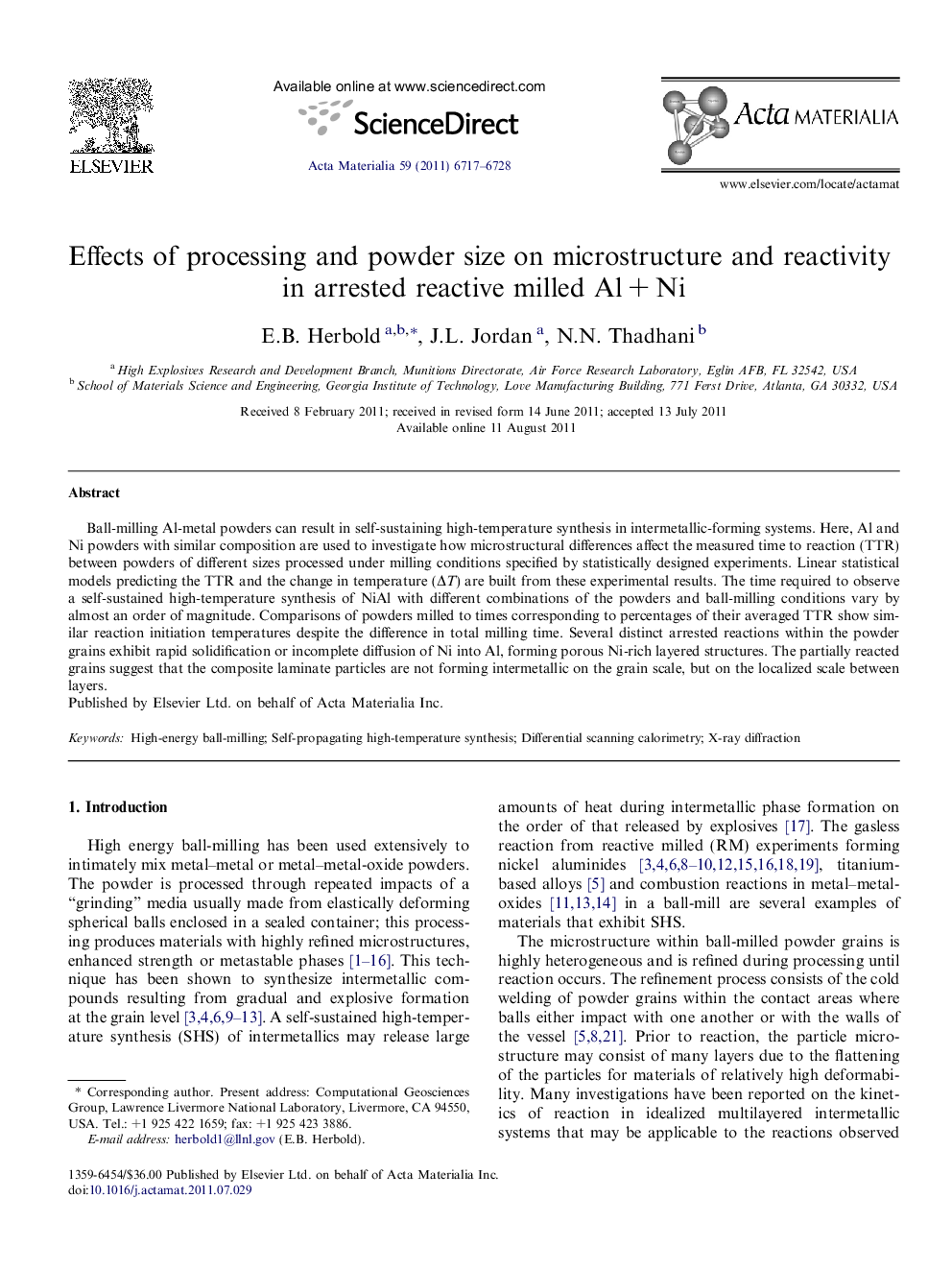| Article ID | Journal | Published Year | Pages | File Type |
|---|---|---|---|---|
| 1446904 | Acta Materialia | 2011 | 12 Pages |
Ball-milling Al-metal powders can result in self-sustaining high-temperature synthesis in intermetallic-forming systems. Here, Al and Ni powders with similar composition are used to investigate how microstructural differences affect the measured time to reaction (TTR) between powders of different sizes processed under milling conditions specified by statistically designed experiments. Linear statistical models predicting the TTR and the change in temperature (ΔT) are built from these experimental results. The time required to observe a self-sustained high-temperature synthesis of NiAl with different combinations of the powders and ball-milling conditions vary by almost an order of magnitude. Comparisons of powders milled to times corresponding to percentages of their averaged TTR show similar reaction initiation temperatures despite the difference in total milling time. Several distinct arrested reactions within the powder grains exhibit rapid solidification or incomplete diffusion of Ni into Al, forming porous Ni-rich layered structures. The partially reacted grains suggest that the composite laminate particles are not forming intermetallic on the grain scale, but on the localized scale between layers.
